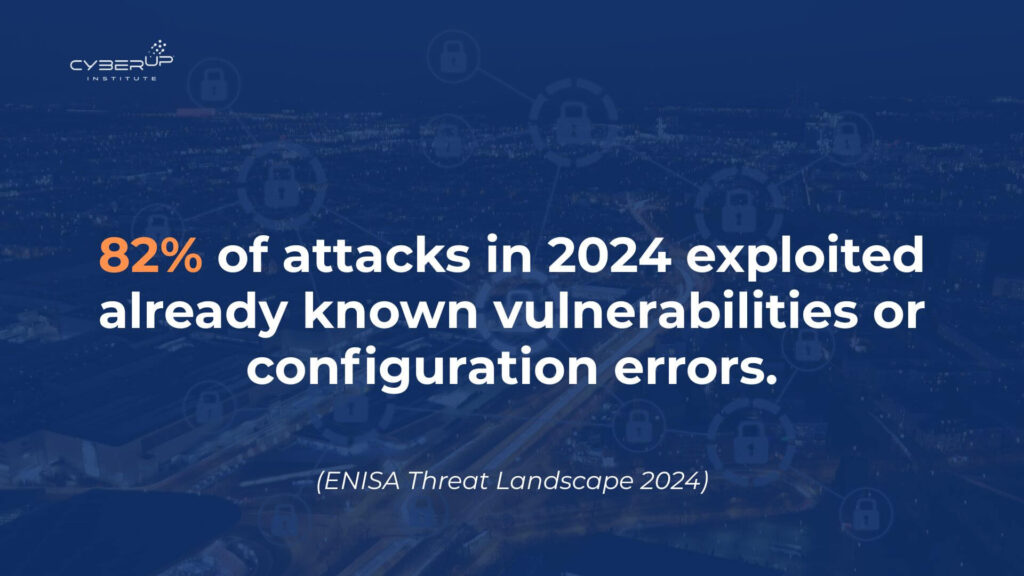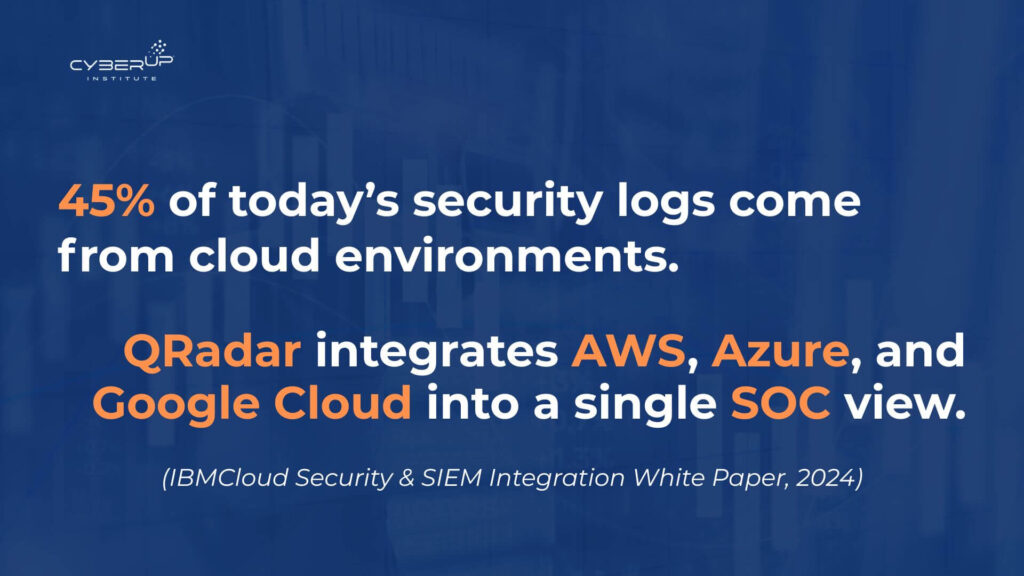There’s a moment, in every cyber attack, when everything still seems quiet. The systems are functioning, emails arrive, and logs click as silently as a regular heartbeat.
Index
ToggleThen, without warning, a small anomaly: an unexpected login, a traffic spike, a file that shouldn’t have been there. For those working in cybersecurity, learning to recognize that signal before it becomes a disaster is the difference between prevention and crisis.
QRadar comes in, IBM’s SIEM platform that helps security teams collect and interpret millions of cyber events per second. But how do you actually learn to “read” these traces? And most importantly: how do you become able to connect them, understanding not only that something is happening, but why?

From theory to real detection
CyberUP Institute’s SOC – QRadar course was created with this very goal: to train professionals capable of enhancing the skills of the Security Operations Center (SOC) in detecting and managing complex cyber threats using QRadar SIEM.
Through theoretical sessions, practical exercises and simulations of ransomware and phishing attacks, participants develop concrete skills in creating advanced queries, custom reports and active lists for real-time monitoring.
Through theoretical sessions, practical exercises and simulations of ransomware and phishing attacks, participants develop concrete skills in creating advanced queries, custom reports and active lists for real-time monitoring.
real-world scenario analysis, interactive debriefing sessions, and structured feedback to optimize response strategies and improve team resilience. This approach transforms learning into concrete experience: participants don’t observe an attack, they experience it—and learn to manage it.

Prerequisites
● Basic knowledge of SIEM systems (e.g. QRadar, ArcSight).
● Experience in managing cyber incidents.
● Familiarity with ransomware, advanced phishing, and forensic analysis concepts.
Understand before reacting
A good analyst isn’t just a technician: he’s an interpreter. He can recognize an anomaly in a user’s behavior, a suspicious connection between seemingly innocuous events, a sudden change in network logs.
QRadar helps them do this, but it requires a trained mind. During the course, students learn to build customized queries —actual intelligence filters—and create active lists to monitor suspicious devices or users in real time.
But above all, they learn to ask the right questions of the data: “Where did the attack come from?”, “What triggered it?”, “How far did it spread?”
Added to this is the forensic dimension: analyzing what happened, gathering evidence, reconstructing sequences, learning from the traces left by the attacker. This is the logic of the NIST, which define the international standards for managing cyber incidents. Each debriefing thus becomes a moment of discussion and growth: understanding what worked, what didn’t, and how to improve next time.
The SOC that looks to the cloud
Beyond the boundaries of infrastructure
Today, security no longer exists solely within the corporate perimeter. Servers, data, and processes are moving to cloud platforms: dynamic, distributed, and constantly evolving environments.
Security Monitoring & Management – Cloud module into the course, which teaches how to extend QRadar monitoring to ecosystems such as AWS, Azure and Google Cloud.
Participants learn to design hybrid SIEM architectures that unify on-premise and cloud data, improving SOC visibility and responsiveness. Security is no longer just a set of tools: it becomes an intelligent infrastructure, capable of adapting to the location of the information.

Technology and expertise: a human balance
Stakeholder-centric approach is based on a simple principle: no technology, no matter how sophisticated, can replace human expertise. QRadar’s new User Behavior Analytics (UBA) and machine learning capabilities—as described in IBM’s documentation—help identify suspicious behavior, but it’s up to the analyst to interpret the context.
Each day concludes with a debriefing: a time for discussion and discussion of what worked and what could be improved. This approach, borrowed from the Incident Response processes recommended by ISO/IEC 27035-1:2023, transforms training into a mental workout for clarity and collaboration.
From Blue Team to Organizational Resilience
Think like the attacker, act like the defender
The Advanced QRadar course doesn’t just show how to use a tool: it shapes a mindset. Students learn to think like a defender but also to understand the attacker’s logic, following the framework’s models. Understanding how a hacker works means anticipating them, not chasing them.
Each exercise — from phishing to ransomware attacks — teaches prevention, how to create consistent response playbooks, and how to reduce reaction time. According to ENISA, in its latest According to the 2024 Threat Landscape Report, the most dangerous threats are those that go unnoticed. Training analysts capable of “reading the silence” therefore becomes a competitive advantage.
An investment that creates value
The skills developed in the QRadar program have direct and tangible impacts:
● Companies reduce detection and response times.
● They improve compliance with regulations such as GDPR, NIS2 and ISO/IEC 27001.
● They build more autonomous and motivated internal teams.
But, above all, they acquire a new organizational awareness: security is no longer a cost, but a skill that protects the value of the business. As the CyberUP Institute team emphasizes:
“Continuing education is today the first pillar of cyber resilience”
From data to awareness
Security as a language
Mastering QRadar isn’t about learning software: it’s about learning to see. To read logs like words, to transform events into narratives, to connect the invisible dots that map an attack.
In the CyberUP laboratories, technicians and professionals discover that security isn’t about alarms, but about stories to be interpreted. Each training session becomes a chapter in which theory, practice, and reflection intertwine. And, as in any good story, the key is to understand before reacting.
In a world where threats outpace technology, training remains the only way to keep pace.
Conclusion
The QRadar – Advanced Tactics for Intrusion Detection course represents much more than a professional development: it is a step towards a new security culture. A culture that combines artificial intelligence and human intelligence, method and intuition, technology and responsibility.
Because true defense isn’t reacting to what happens, but understanding what might happen. And preparing, together, to face it.
FAQ
What is a SIEM and what is QRadar used for?
A SIEM (Security Information and Event Management) is a platform that collects and analyzes security logs from all enterprise systems.
QRadar, developed by IBM, is one of the most advanced SIEMs: it allows you to identify suspicious behavior and manage security incidents in real time.
Who can participate in CyberUP’s Advanced QRadar course?
The course is designed for IT professionals, members of SOCs or Incident Response teams, as well as for those with a technical background who want to specialize in threat monitoring and analysis.
Do you need technical experience to follow the training?
It’s helpful to know the basic concepts of networking and cybersecurity, but the CyberUP course provides a step-by-step guide even for those who aren’t yet QRadar experts, combining theory, labs, and simulations.
Does the course issue certifications?
Yes, at the end of the course, a CyberUP Institute certificate is issued, certifying the skills acquired, in line with European cybersecurity training standards.
